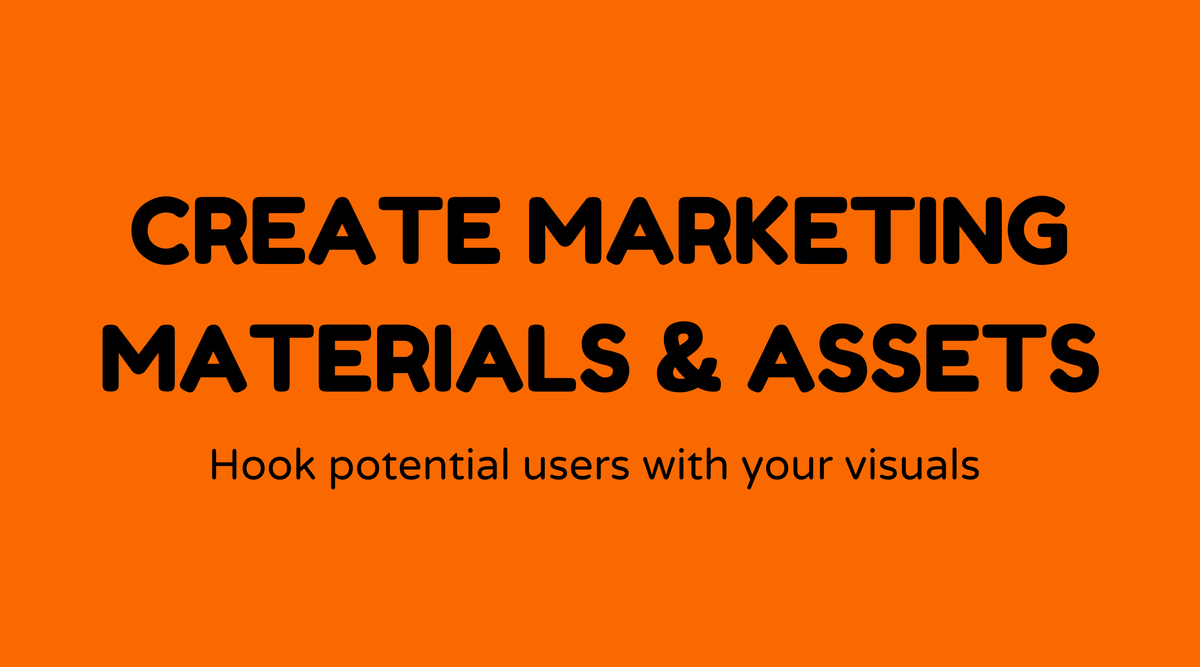Create marketing materials and assets

Overview of Creating Marketing Materials and Assets:
As you step into the realm of marketing resources, crafting these items is essential for any brand wanting to make an impact. Think of them as the tools necessary to narrate your brand's story, from engaging flyers to visually appealing digital ads.
These resources are not just decorative; they are intended to connect with audiences, enhance your brand's credibility, and ultimately drive sales. Whether it’s a polished brochure, an informative infographic, or a striking video, each component plays an important role in your marketing approach.
Why Creating Marketing Materials and Assets Matters:
View marketing materials as your brand's finest attire. When you present well, people take notice. Similarly, thoughtfully designed marketing assets enhance brand visibility and positively influence consumer perceptions. They can help establish trust, convey your brand's values, and spotlight your distinctive offerings.
In today's digital landscape, standing out is more important than ever. With the right resources, you can reach new audiences, strengthen relationships, and convert prospects into loyal customers.
What is Creating Marketing Materials and Assets:
Creating marketing materials involves developing both tangible and digital items that express your brand’s message. This might range from traditional formats like business cards, flyers, and print advertisements, to contemporary digital platforms including social media graphics, web banners, and email campaigns.
It’s a combination of creativity and strategy, merging design appeal with commercial purpose. Effective marketing assets are visually attractive, message-driven, and strategically aligned with your business goals.
How to Create Marketing Materials and Assets:
- Identify Your Audience: Understand who you’re addressing. Tailor messages that meet their preferences and requirements.
- Define Your Message: Be clear about what you want to convey. Keep it straightforward and engaging.
- Select the Right Medium: Consider whether digital, print, or a combination is most suitable for your audience.
- Design with Intention: Strive for visuals that grab attention. Use professional tools or hire designers to produce quality assets.
- Incorporate Brand Elements: Apply consistent colors, logos, and taglines for brand consistency.
- Call-to-Action (CTA): Include a compelling CTA that encourages the audience to engage or purchase.
Examples of Creating Marketing Materials and Assets:
- Nike’s Social Media Campaigns: Recognized for their inspiring videos and impactful imagery, which consistently reinforce their message of empowerment.
- Coca-Cola's Print Advertisements: Iconic campaigns like "Share a Coke" cleverly use names on bottles to create personalized consumer experiences.
- Mailchimp's Email Designs: Known for their imaginative and user-friendly email layouts that speak directly to their audience.
Sample Agenda of Creating Marketing Materials and Assets Workshop:
-
Introduction to Marketing Basics (15 mins):
- Significance of Marketing Materials
- Fundamentals of Brand Storytelling
-
Design Principles and Tools (30 mins):
- Key Design Elements
- Introduction to Design Software (Canva, Adobe Creative Suite)
-
Strategy and Message Definition (20 mins):
- Identifying Target Audience
- Crafting Core Messages
-
Medium Selection and Integration (25 mins):
- Choosing Between Digital and Print
- Ensuring Multi-Platform Consistency
-
Hands-On Design Exercise (45 mins):
- Participants Create a Simple Marketing Asset
- Feedback and Revisions
-
Q&A and Wrap-up (15 mins):
- Open Floor for Questions
- Final Thoughts and Resources
FAQs:
What are the key components of effective marketing materials?
Clear messaging, strong visuals, audience alignment, and a persuasive CTA.
Can small businesses create impactful marketing assets on a budget?
Yes, using low-cost or free tools like Canva and leveraging DIY design tutorials can be tremendously helpful.
How often should marketing materials be updated?
Depending on trends and campaigns. Regular updates ensure your materials stay relevant and engaging.
What is the role of social media in marketing assets?
Social media enhances reach, allowing brands to create interactive and dynamic content that engages users immediately.
Is professional design necessary for all marketing materials?
While not required, professional design can enhance quality and credibility, especially for materials aimed at larger audiences.
Where can I find design inspiration for my marketing materials?
Platforms like Pinterest, Behance, and Dribbble are excellent for inspiration. Following industry leaders and design blogs can also inspire creativity.



